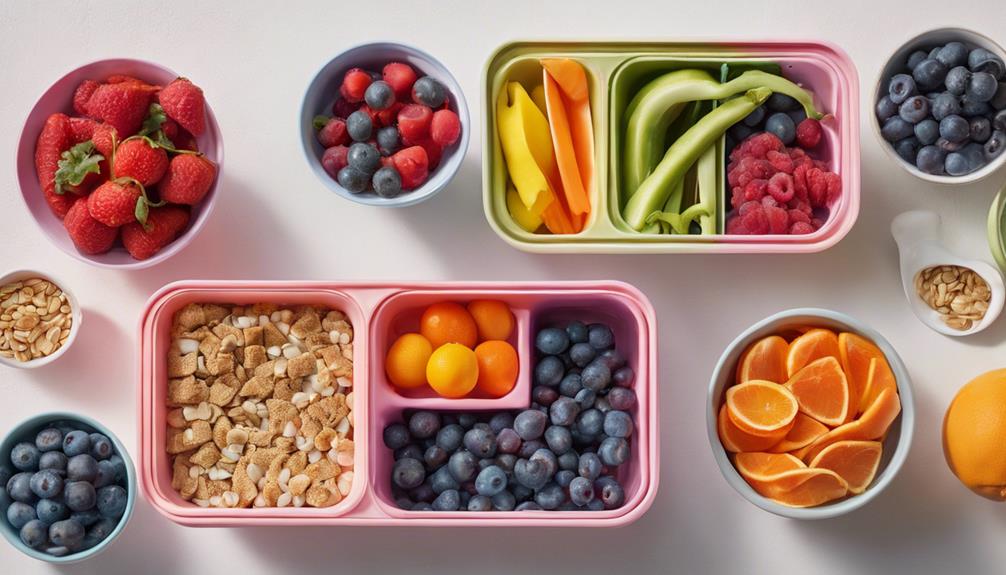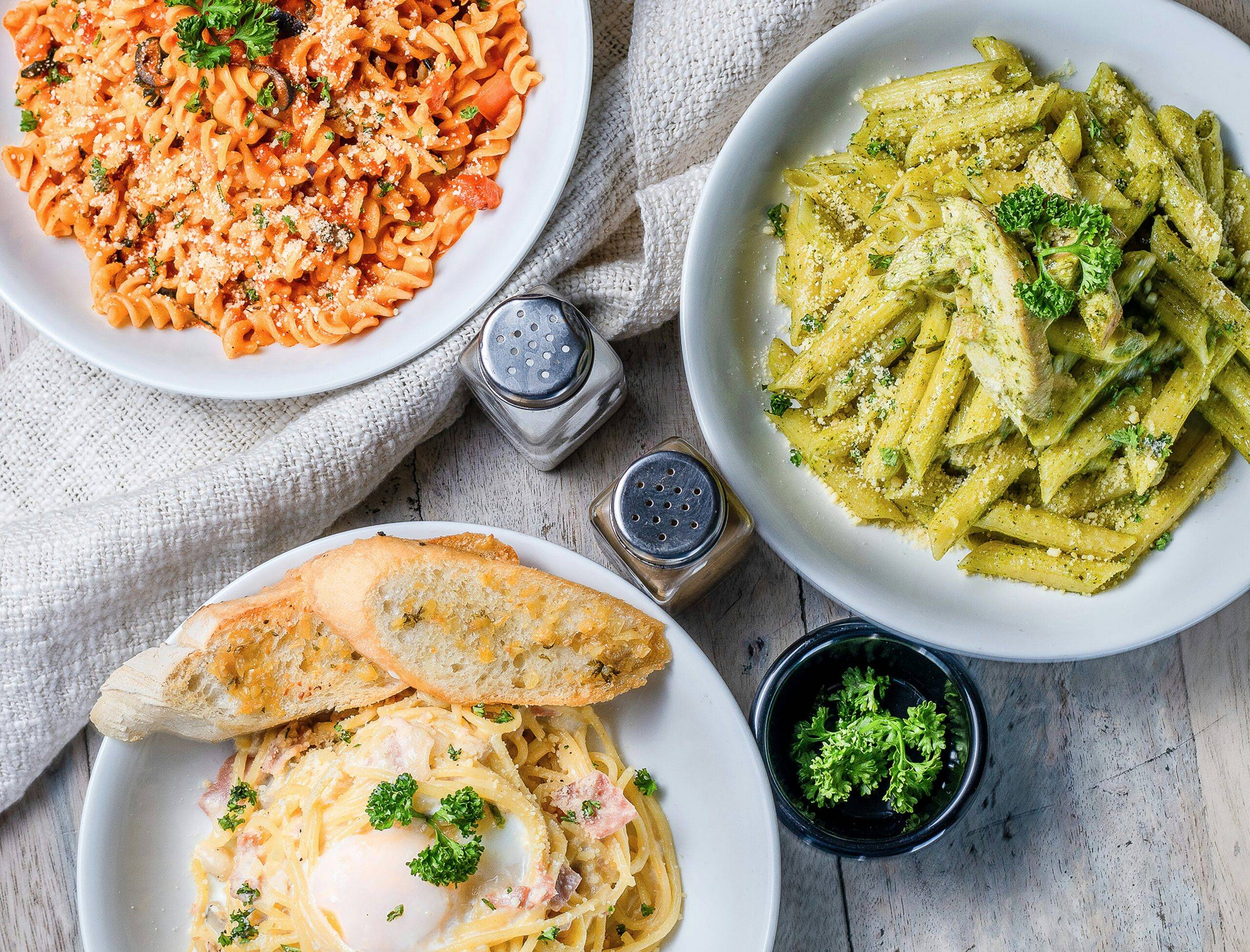Amazing Healthy Seasonal Meal Prep For Kids

Amazing Healthy Seasonal Meal Prep For Kids; Preparing healthy seasonal meals for your kids can be a fun and rewarding experience. Focus on fresh, local ingredients that pack flavor and nutrients. Involve your kids in meal prep by letting them choose seasonal produce and assign them age-appropriate cooking tasks. Try colorful recipes like summer fruit salads or cozy fall pumpkin soup that excite their taste buds. Use convenient meal prep containers to store healthy portions and keep snacks accessible. Making cooking a team effort also strengthens your bond. There’s plenty more to explore about easy recipes and tips that’ll make meal prep even more enjoyable!
Benefits of Seasonal Ingredients
Using seasonal ingredients not only enhances the taste of your meals but also boosts their nutritional value. When you choose fresh produce that’s in season, you’re tapping into ingredients at their peak flavor and nutrient density. This means your kids are getting the maximum health benefits from what they eat. Seasonal fruits and vegetables often contain higher levels of vitamins and minerals, which can support their growth and development.
Local sourcing plays a significant role in this equation. By sourcing ingredients from local farmers or markets, you’re ensuring that the produce is picked at the right time, often just hours before it reaches your table. This freshness not only enhances flavor but also minimizes the loss of nutrients that can occur during long transportation times. Plus, supporting local farmers helps to strengthen your community and the economy.
Incorporating seasonal ingredients into your meal prep can be a fun and educational experience for your kids. Involve them in the process by letting them choose seasonal fruits or vegetables at the market. Teaching them about the benefits of eating what’s in season can foster a positive relationship with food.
Essential Meal Prep Tools
A well-equipped kitchen can make meal prep for kids not only easier but also more enjoyable. To get started, invest in high-quality meal prep containers. These containers help you store individual portions of meals, making it simple for your kids to grab a healthy option when they’re hungry. Look for options that are microwave-safe, dishwasher-safe, and BPA-free to guarantee safety and convenience.
Next, don’t underestimate the power of important kitchen gadgets. A good set of knives is vital for chopping fruits and vegetables efficiently. Think about a sturdy cutting board that provides a safe surface for your kids to help with meal prep. A vegetable peeler and a set of measuring cups are also handy tools to have on hand. They’ll help you accurately portion ingredients and teach your kids about measurements.
Another great gadget to reflect on is a slow cooker or an Instant Pot. These appliances save time and allow you to prepare healthy meals with minimal effort. You can set it and forget it, focusing on other activities while dinner cooks.
Lastly, keep a supply of labels and markers handy. Labeling your meal prep containers not only helps with organization but also makes it easier for your kids to recognize what’s inside. With these essential meal prep tools, you’ll streamline your cooking process and set your family up for success when it comes to healthy eating.
Kid-Friendly Seasonal Recipes
With the changing seasons comes a wonderful opportunity to introduce your kids to fresh, delicious ingredients through seasonal recipes. By incorporating seasonal ingredients, you can not only boost their nutrition but also help them develop a taste for what’s in season. For example, in spring, try making a vibrant veggie stir-fry with snap peas, asparagus, and carrots. These colorful veggies are not just nutritious; they’re also visually appealing and often align with kid preferences.
In summer, you can whip up a revitalizing watermelon and cucumber salad, drizzled with a bit of lime. Kids usually love the sweet, juicy flavors, making it easier to get them excited about healthy eating. Fall is perfect for cozy dishes like pumpkin soup or apple crisp, which can be both comforting and healthy. Your kids might even enjoy helping you make these recipes, which adds a fun element to meal prep.
As winter rolls in, consider hearty meals like roasted root vegetables or a simple chili made with kidney beans, tomatoes, and seasonal squash. These dishes are not only filling but also allow you to teach your kids about using seasonal ingredients effectively. By focusing on kid preferences, you can create meals that are both enjoyable and nutritious, ensuring your little ones are enthusiastic to plunge into each meal you’ve prepared. Embracing seasonal cooking can transform mealtime into a fun and educational experience for the whole family.
Fun and Creative Meal Ideas
Meal times can become a canvas for creativity, making healthy eating both fun and engaging for kids. One way to spark this creativity is by using themed meal kits. These kits can revolve around a favorite character, holiday, or even a cultural cuisine, allowing you to introduce new flavors while keeping things exciting. Imagine a “Superhero Dinner” where each item on the plate represents a different hero, or a “Taco Tuesday” with ingredients that allow kids to build their own tacos.
Colorful food presentations can also transform ordinary meals into extraordinary experiences. Try arranging fruits and vegetables into fun shapes or using cookie cutters to create star-shaped sandwiches. A rainbow plate, featuring an array of colorful fruits and veggies, not only looks appealing but also motivates kids to try new foods.
You can also create a “DIY Pizza Night” with whole wheat crusts, various toppings, and vibrant sauces. Letting kids choose their toppings promotes a sense of ownership and excitement about their meal. Additionally, using a variety of colors in meals not only makes them visually appealing but also guarantees a range of nutrients.
Tips for Involving Kids in Prep
Getting kids involved in meal prep not only enhances their excitement about food but also helps them develop valuable skills. Start by assigning age-appropriate tasks that match their abilities. Younger kids can wash vegetables, tear lettuce for salads, or mix ingredients. As they grow, you can introduce more complex tasks such as chopping fruits with a kid-friendly knife or measuring ingredients.
Emphasizing kitchen safety is essential. Teach your kids how to handle knives properly and the importance of washing their hands before cooking. Make sure they understand the risks of hot surfaces and sharp tools. Supervise them closely, especially when they’re using equipment they’re not familiar with.
Create a fun environment by allowing them to choose recipes or meal components. This involvement makes them feel like they have a say in what they eat, increasing the likelihood they’ll enjoy the meals you prepare together. You can also encourage them to experiment with flavors and ingredients, fostering creativity in the kitchen.
Don’t forget to make it a team effort! Cooking together can be a bonding experience, making meal prep a family tradition. Turn up some music and dance while you work, or set a timer for friendly competitions on who can chop veggies the fastest—while still maintaining kitchen safety, of course.
Storage and Organization Strategies
Organizing and storing your meal prep efficiently can make a significant difference in maintaining freshness and convenience throughout the week. Start by choosing the right meal container options that suit your family’s needs. Look for containers that are BPA-free, microwave-safe, and stackable to maximize space. Glass containers are great for reheating meals, while plastic options can be lightweight and kid-friendly. Be certain to label each container with the meal name and date for easy identification.
Next, focus on fridge organization. Arrange your fridge so that prepared meals are easily accessible. Keep them at eye level, and designate specific shelves for different types of meals—like breakfasts, lunches, and snacks. If you’ve got kids, consider using clear bins for snacks, so they can pick their favorites without making a mess.
Don’t forget to use the FIFO (First In, First Out) method. Place older meals in front to guarantee nothing goes to waste. If you’re prepping for the week ahead, consider freezing some meals to maintain freshness. Use freezer-safe containers or bags and label them clearly with the contents and date.
Balancing Nutrition and Taste
Striking a balance between nutrition and taste is essential for keeping kids excited about their meals. If you can make healthy food delicious, your children will be more likely to enjoy it and develop lifelong healthy eating habits. Start by considering their taste preferences. Kids often lean towards familiar flavors, so try to incorporate these into your meal prep. For instance, if your child loves pizza, think about a whole-grain crust topped with fresh veggies and low-fat cheese. This way, you satisfy their cravings while sneaking in some nutrition.
You can also involve your kids in the cooking process. When they help prepare meals, they’re more likely to appreciate what’s on their plates. Use this opportunity for nutrition education too. Teach them about the benefits of the ingredients, like how spinach is full of iron or how sweet potatoes provide plenty of vitamins.
Experiment with spices and herbs to enhance flavors without relying on excessive salt or sugar. Roasting vegetables can also bring out their natural sweetness, making them more appealing to young taste buds.
Don’t forget about presentation—kids eat with their eyes first! Create fun shapes or colorful combinations to make the meal visually appealing. By prioritizing both nutrition and taste, you’ll help your little ones develop a positive relationship with food, ensuring they’ll be excited about what’s on the table.
Seasonal Snack Options for Kids
When it comes to snacking, you can make the most of each season by choosing nutritious options that kids will love. In the fall, think about cozy treats, while summer brings a bounty of fresh fruits. Winter snacks can be warm and comforting, making healthy choices easy and enjoyable year-round.
Nutritious Fall Treats
As the leaves change color and the air grows crisp, it’s the perfect time to introduce your kids to some nutritious fall treats. Start with delicious pumpkin energy balls, packed with nutrients and a hint of sweetness. For a quick snack, try apple bites smeared with nut butter; they’re both tasty and filling.
Cinnamon oatmeal is another fantastic option—just add some apples or raisins to make it even more enticing. Sweet potatoes are also in season; you can whip up some sweet potato fries or mash them for a savory side.
Don’t forget about fall smoothies! Blend up some spinach, banana, and pumpkin for a nutritious drink your kids will love. For baked treats, carrot muffins are a hit, providing a great way to sneak in veggies.
For a crunchy snack, make seasonal granola with oats, nuts, and dried fruits, or whip up pecan clusters for a sweet treat. Finally, consider making cranberry bars that are both chewy and satisfying. These nutritious fall treats will keep your kids energized and excited about healthy eating this season!
Summer Fresh Fruit Ideas
Summer brings a bounty of fresh fruits that kids will love! Take advantage of the season by getting the kids involved in berry picking. It’s a fun way to spend time outdoors while gathering delicious berries for snacks. Once you’ve got your haul, whip up some colorful fruit salads with a mix of their favorites—think strawberries, blueberries, and watermelon.
For a cool treat on hot days, try making smoothie popsicles. Blend fruits like bananas and mangoes with yogurt, pour them into molds, and freeze. They’ll be a hit! You can also create tropical skewers by threading chunks of pineapple, kiwi, and strawberries onto sticks for a playful snack.
Don’t forget about frozen fruit, which can be a revitalizing addition to fruit-infused water. Just toss in some berries or citrus slices for a tasty hydration boost. For family outings, pack picnic platters filled with a variety of fruits, making sure to include some edible arrangements for extra flair. With these summer fresh fruit ideas, you’ll keep snack time exciting and nutritious for your kids!
Winter Warm Snack Options
While the chilly weather invites cozy moments indoors, it’s the perfect opportunity to whip up warm snacks that will delight your kids. One great option is to prepare hearty bites like mini stuffed peppers or baked sweet potato wedges. These are not only delicious but also packed with nutrients.
You can also create some cozy dips that kids can enjoy with whole-grain crackers or veggie sticks. A warm cheese dip made with cheddar and a touch of garlic is sure to be a hit, while a creamy hummus infused with roasted red peppers adds a fun twist.
Another idea is to make a comforting bowl of oatmeal topped with fruits, nuts, and a drizzle of honey. This not only fills them up but also provides energy for their playtime adventures.
Lastly, consider baking some whole-grain banana muffins. These can be prepped in advance, making them an easy grab-and-go option. With these winter warm snack options, you’ll keep your kids happy and nourished, all while enjoying the cozy vibes of the season!
Frequently Asked Questions: Amazing Healthy Seasonal Meal Prep For Kids
How Can I Introduce New Seasonal Foods to Picky Eaters?
To introduce new seasonal foods to picky eaters, focus on tasty presentations and involve them in fun cooking activities. Make it a game to create colorful dishes, and they’ll be more likely to try them.
What Are the Best Ways to Freeze Seasonal Meals?
To freeze seasonal meals effectively, use proper freezing techniques like cooling food before storing. Meal portioning helps you manage servings easily, ensuring you only defrost what you need while maintaining freshness and flavor.
How Can I Ensure Meals Are Allergy-Friendly?
To guarantee meals are allergy-friendly, always check allergy labels carefully. Use safe substitutions like almond milk instead of dairy or gluten-free flour. This way, you can create delicious meals that everyone can enjoy without worry.
What’s the Ideal Meal Prep Schedule for Busy Families?
To create an ideal meal prep schedule, you’ll want to integrate meal prep tips into your family routines. Set aside time on Sundays, involve everyone, and make it a fun, productive bonding experience!
Are There Any Seasonal Foods to Avoid for Kids?
When considering seasonal foods for kids, you should avoid those that trigger seasonal allergies. Also, guarantee food safety by checking for freshness and proper handling, especially with produce that’s more susceptible to bacteria during certain seasons.
Conclusion
Incorporating seasonal ingredients into your meal prep not only boosts nutrition but also keeps meals exciting for your kids. By using the right tools and involving your little ones in the process, you can create fun and tasty dishes together. Remember to get creative with snacks and maintain a balance between nutrition and flavor. With these strategies, you’ll set your family up for healthy eating habits all year round. Enjoy the journey of cooking together!








